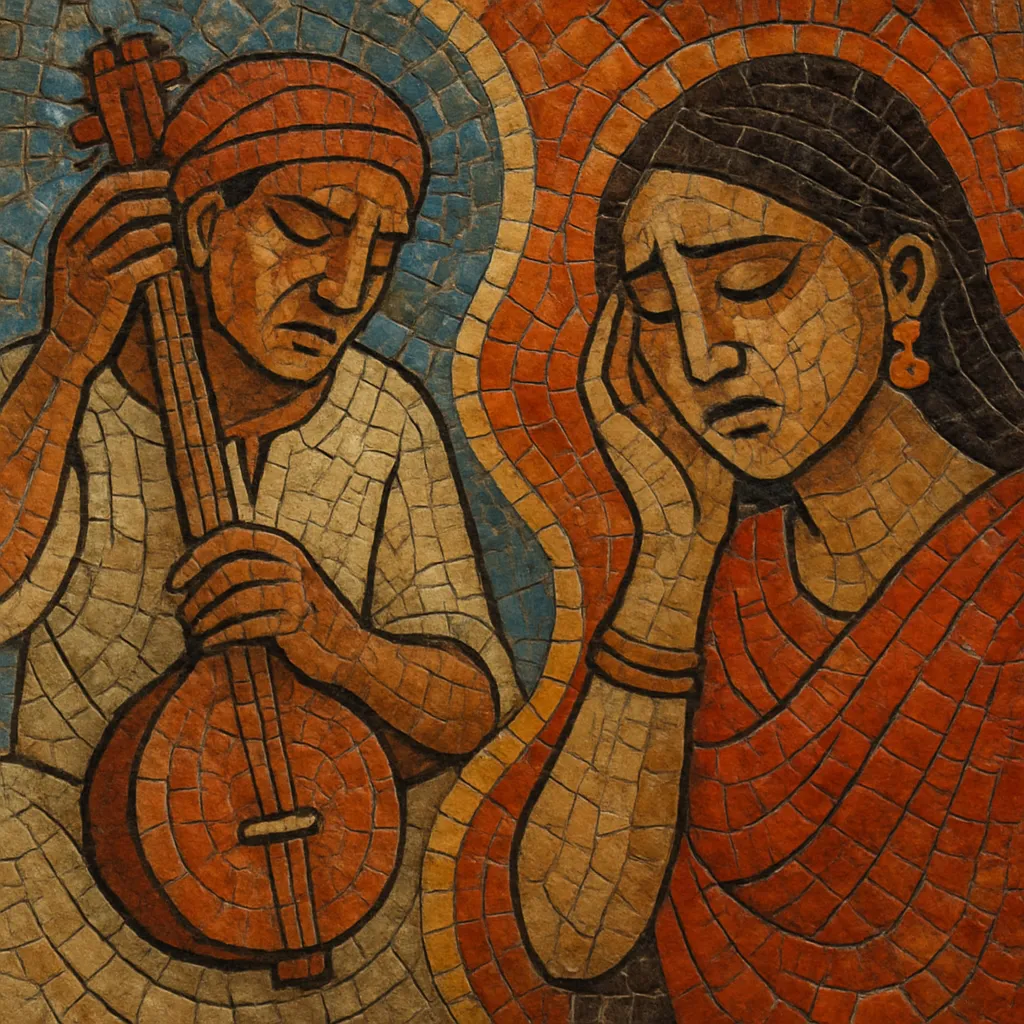
Biraha (also spelled Birha) is a narrative folk-singing tradition of the Bhojpuri-speaking region of North India that centers on the emotion of viraha—longing and separation. The form blends earthy storytelling with semi-classical melodic sensibilities and a strong call-and-response dynamic.
Traditionally performed by a lead singer (gayak) with a small chorus and a folk ensemble—most commonly dholak, harmonium, and hand-cymbals (manjira/jhaal)—Biraha unfolds in long sessions that can last through the night. Performances weave poetic couplets, extempore commentary, devotional motifs, and social satire into an evolving tale, punctuated by refrains that the chorus reinforces.
Biraha thrives as both village entertainment and a stage style (akhara performance), retaining a rustic timbre while borrowing melodic turns from Hindustani ragas and semi-classical genres. Its language is primarily Bhojpuri, rich with idiom, metaphor, and rhetorical devices.
Biraha emerged in the late 19th century in and around Varanasi and the Bhojpuri-speaking belt of eastern Uttar Pradesh and western Bihar. The form draws its name and affective core from viraha (the mood of separation) and likely crystallized from older village song practices, devotional bhajan/kirtan formats, and the narrative habits of North Indian folk balladry.
Folk accounts and local histories credit Bihari Lal Yadav (1857–1926) with systematizing the "Benaras Biraha" stage idiom—shaping performance order, heightening call-and-response between lead and chorus, and anchoring the music in accessible talas (especially Keherwa and Dadra) while allowing melodic borrowing from ragas like Kafi, Khamaj, Pilu, and Bhairavi.
Through the mid-20th century, Biraha grew via itinerant troupes (akhara) who performed at fairs, festivals, and community events. From the 1970s onward, All India Radio broadcasts and then the cassette era in the 1980s–90s helped popularize star performers beyond local circuits. The genre’s themes expanded to include migration, labor, social reform, and humorous commentary, while retaining devotional and romantic strands.
Biraha remains vibrant on live stages, in regional media, and on digital platforms. Its poetics and performance habits have influenced Bhojpuri popular music and, through the Bhojpuri diaspora, contributed to Indo-Caribbean folk-pop lineages (later informing chutney). Today, Biraha balances revivalist authenticity with modern amplification, studio arrangements, and thematic experimentation.

